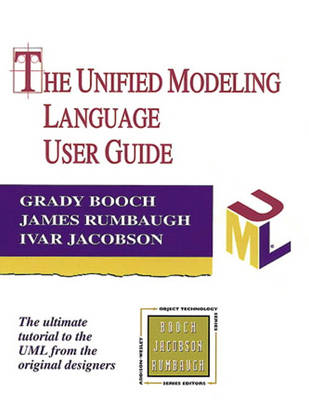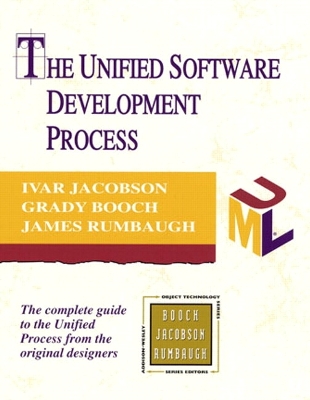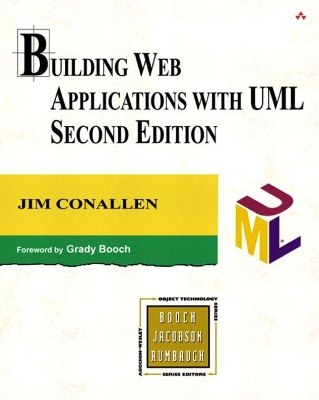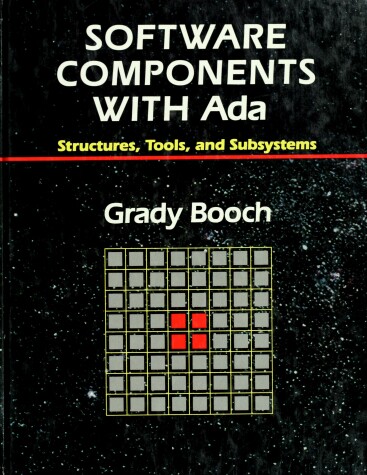Addison-Wesley Object Technology
6 total works
The Unified Modeling Language User Guide
by Grady Booch, James Rumbaugh, and Ivar Jacobson
Just as architects and musicians need architectural drawings or music scores to be written using standard notations that everyone agrees on and understands, developers need a single, common, widely usable modeling language for the development of software systems. The UML has been proposed as this standard and has received the support of academic and industry heavyweights.
The Unified Modeling Language User Guide is the first of three definitive UML works written by the creators of UML, Grady Booch, Jim Rumbaugh, and Ivar Jacobson. Together these three widely respected and world-famous methodologists form an unbeatable author team representing combined worldwide sales of their prior individual books of more than 250,000 copies. This book will introduce the core 80% of the UML, approaching it in a layered fashion and providing numerous examples of its application. The Unified Modeling Language User Guide is suitable for developers unfamiliar with UML or with modeling in general.
Object-Oriented Analysis and Design with Applications
by Grady Booch, Robert Maksimchuk, Michael Engle, Bobbi Young, Ph.D., Jim Conallen, and Kelli Houston
Object-Oriented Design with Applications has long been the essential reference to object-oriented technology, which, in turn, has evolved to join the mainstream of industrial-strength software development. In this third edition--the first revision in 13 years--readers can learn to apply object-oriented methods using new paradigms such as Java, the Unified Modeling Language (UML) 2.0, and .NET.
The authors draw upon their rich and varied experience to offer improved methods for object development and numerous examples that tackle the complex problems faced by software engineers, including systems architecture, data acquisition, cryptoanalysis, control systems, and Web development. They illustrate essential concepts, explain the method, and show successful applications in a variety of fields. You'll also find pragmatic advice on a host of issues, including classification, implementation strategies, and cost-effective project management.
New to this new edition are
- An introduction to the new UML 2.0, from the notation's most fundamental and advanced elements with an emphasis on key changes
- New domains and contexts
- A greatly enhanced focus on modeling--as eagerly requested by readers--with five chapters that each delve into one phase of the overall development lifecycle.
- Fresh approaches to reasoning about complex systems
- An examination of the conceptual foundation of the widely misunderstood fundamental elements of the object model, such as abstraction, encapsulation, modularity, and hierarchy
- How to allocate the resources of a team of developers and mange the risks associated with developing complex software systems
- An appendix on object-oriented programming languages
This is the seminal text for anyone who wishes to use object-oriented technology to manage the complexity inherent in many kinds of systems.
Preface
Acknowledgments
About the Authors
Section I: Concepts
Chapter 1: Complexity
Chapter 2: The Object Model
Chapter 3: Classes and Objects
Chapter 4: Classification
Section II: Method
Chapter 5: Notation
Chapter 6: Process
Chapter 7: Pragmatics
Chapter 8: System Architecture: Satellite-Based Navigation
Chapter 9: Control System: Traffic Management
Chapter 10: Artificial Intelligence: Cryptanalysis
Chapter 11: Data Acquisition: Weather Monitoring Station
Chapter 12: Web Application: Vacation Tracking System
Appendix A: Object-Oriented Programming Languages
Appendix B: Further Reading
Notes
Glossary
Classified Bibliography
Index
Unified Software Development Process (Paperback), The
by Ivar Jacobson, Grady Booch, and James Rumbaugh
Presents numerous examples of real-world projects and demonstrates a variety of approaches to developing object-oriented systems. 0805305947B04062001
In this comprehensive introduction to Ada programming, programmers learn how to maximize the potential of this powerful language using an object-oriented methodology. Grady Booch and Doug Bryan combine their expertise to explain how to create large-scale Ada systems using good software engineering principles. Five large-scale Ada programming examples build upon these principles using an object-oriented methodology while illuminating topics such as database systems and generic tree packages. The Third Edition also incorporates more small-sized code examples, exercises based on the programming applications, a new chapter on Ada's impact on the software crisis, and an appendix on Ada 9X.





